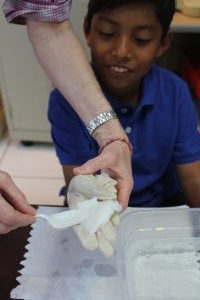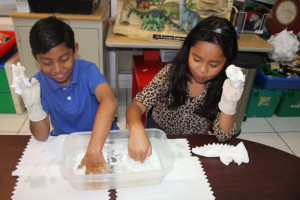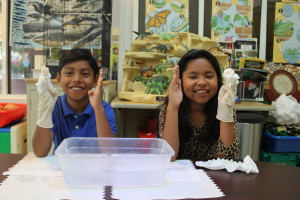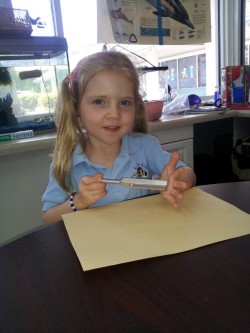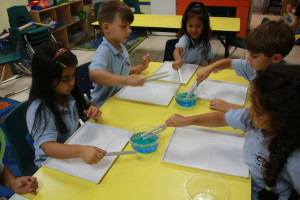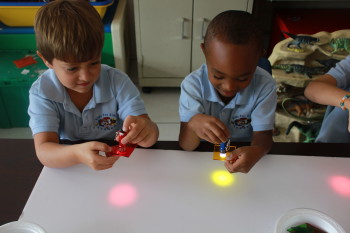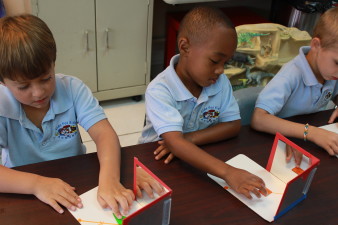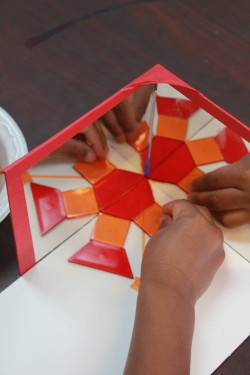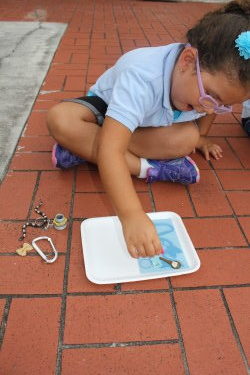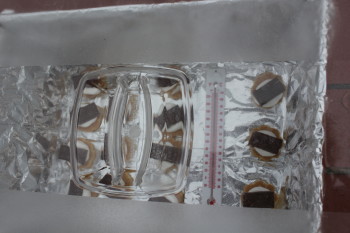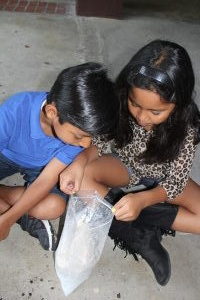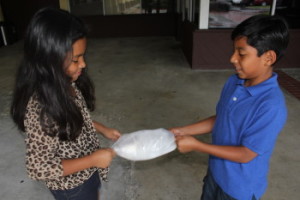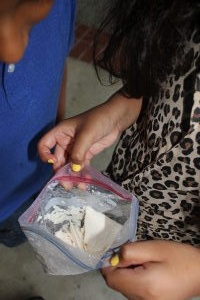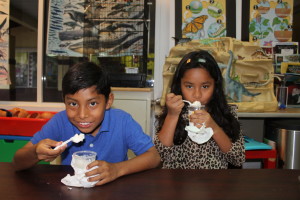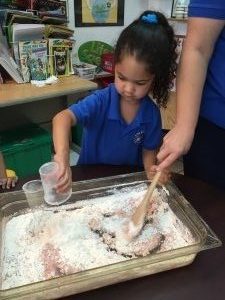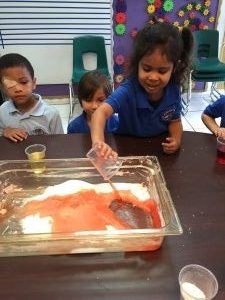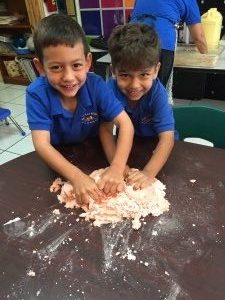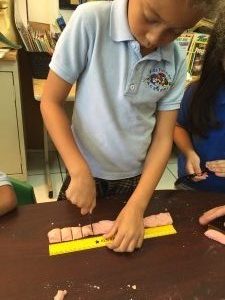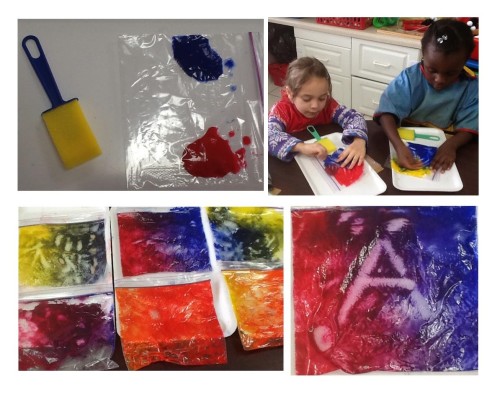The Concept: Students will become familiar with the proper way to use pipettes or droppers for experiments involving liquids. Teaching children to squeeze and release the dropper is great for improving small-motor muscles. The pipette can also be used to discuss the concept of air: When the pipette is squeezed, the air is pushed out. When it is let go, the air outside the dropper pushes the water inside the dropper.
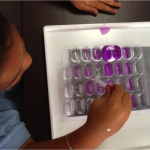
Tools for Drips and Drops
Posted on by Hands On Minds On Education TeamA Closer Look with the Hand Lens
Posted on by Hands On Minds On Education TeamThe Concept: As you teach children the role of a scientist, be sure that they understand the proper use of the tools that scientists use. In this activity, children learn the use of a hand lens as a tool for making things appear bigger.

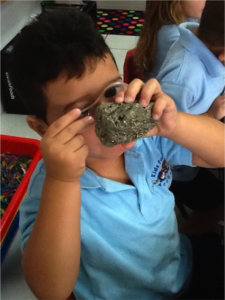
Pouring and More: Funnels and Test Tubes
Posted on by Hands On Minds On Education TeamThe Concept: This activity introduces a funnel as a tool scientists and other individuals use to prevent spills. Once children know how to use a funnel, you can add it to the sand-and-water table. It also introduces test tubes as tools for holding liquids. Students will explore the proper use of test tubes and the use of funnels to make pouring easier.
Planting and Harvesting Radishes
Posted on by Hands On Minds On Education TeamThe Concept: Gardening can be another way to encourage scientific discovery and mathematical thinking. The children will experience planting radish seeds and growing them into vegetable plants. Once the radishes are grown and harvested, students can compare sizes, count the radishes, and even cut them and taste how bitter they are. Variations include growing peppers, cabbages, lettuce, herbs, cucumbers, squash, or eggplants. Each type of plant provides opportunities for observation and measurement.
Pumpkin Properties and Predictions
Posted on by Hands On Minds On Education TeamThe Concept: The children will examine a pumpkin inside and out, measuring and weighing it and counting the number of seeds inside. They will review the concepts of sinking and floating and will predict whether or not their pumpkins will float when placed in water.
Examining Seeds and Observing Growth
Posted on by Hands On Minds On Education TeamThe Concept: The children will learn that, like an animal, a plant follows a life cycle as it develops. Children will use a hand lens to examine dry and soaked seeds. They will describe the physical properties, comparing the sizes and shapes. They will remove the seed coat to reveal the new plant. They will begin a study of plants and gardening by planting their seeds.
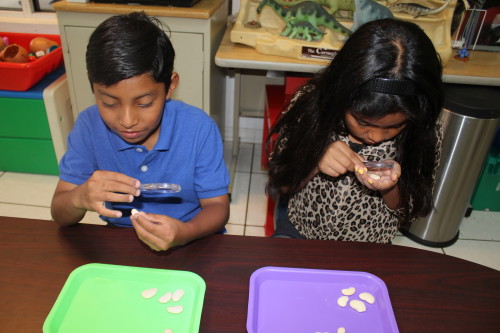
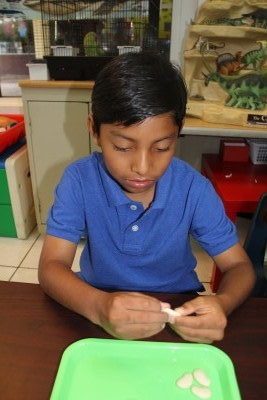
Our Hearts and Circulation: A Matter of Exercise
Posted on by Hands On Minds On Education TeamThe Concept: The children will learn about the heart and the role it plays in circulation. They will do various activities and will learn how to feel their pulses to determine which activities are most strenuous for the heart. They will also practice counting and will review the concept of time.
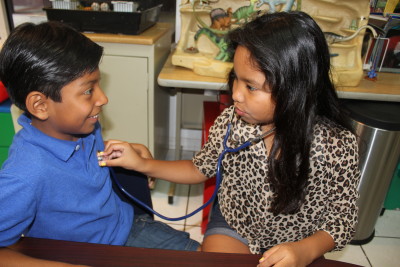
Understanding Air and Blowing Bubbles
Posted on by Hands On Minds On Education TeamThe Concept: The children will learn that air is all around us and that we need air to breathe. They will also learn that air has weight and takes up space.
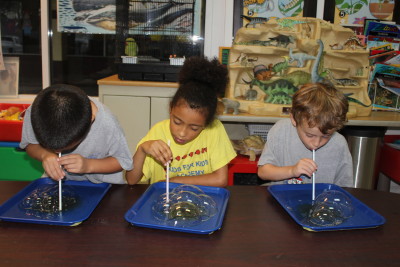
Comparing Different Animal Homes
Posted on by Hands On Minds On Education TeamThe Concept: Students will learn that animals are adapted to living in different types of environments. After listing different animal homes, students will take part in making a simulated spiderweb.
Animal Adaptations: Marine Mammals and Blubber
Posted on by Hands On Minds On Education TeamThe Concept: The children will learn about mammals and how marine mammals use their thick blubber to stay warm in water. Through discussion, the children will learn about comparing attributes or characteristics. They will also review the concepts of hot and cold.
Cool Vibrations: Sensing Sound Waves
Posted on by Hands On Minds On Education TeamThe Concept: In this activity, the children will explore their sense of sound. They will use a tuning fork to hear sound, and they will see and feel the vibrations.
Playing with Light and Shadows
Posted on by Hands On Minds On Education TeamThe Concept: Children are fascinated by shadows. They love to make shadow puppets with their hands. In this activity, they will expand on that idea as they explore new ways to create shadows using light reflected by a mirror.
Exploring Mirrors, Light, and Reflection
Posted on by Hands On Minds On Education TeamThe Concept: Exploring reflections, the children will learn the role that light plays. They will learn how a mirror works and will create designs that will be reflected into a mirror.
Creative Printing with Sunlight
Posted on by Hands On Minds On Education TeamThe Concept: The sun is a powerful energy source. In this activity, children will see the power of the sun firsthand as they create images fixed onto paper by sunlight. Reserve this activity for a sunny day for the best effect.
Sun-Cooked Snacks
Posted on by Hands On Minds On Education TeamThe Concept: A perfect sunny-day activity, the children will learn about the role the sun plays in producing heat. They will also use the power of the sun to actually cook fun s’mores treats. Finally, children will learn about the dangers of the sun and ways to protect themselves from its powerful rays.
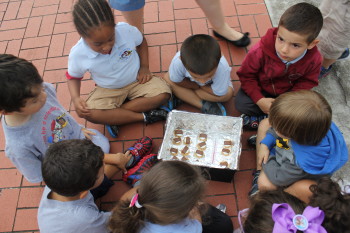
Shake and Freeze: Homemade Ice Cream
Posted on by Hands On Minds On Education TeamThe Concept: Cooking activities provide a way to demonstrate hot and cold. By involving the children in making ice cream, you can reinforce the concept of chemical change as you make a yummy treat.
Go, Car, Go! Simple Machines and Inclined Planes
Posted on by Hands On Minds On Education TeamThe Concept: The children will learn about how simple machines make work easier. They will be introduced to the concepts of an inclined plane, potential energy, and kinetic energy. When they practice rolling cars down ramps, they will learn that the higher the ramp, the farther the car will roll. They will exercise the skills of counting and measurement, including nonstandard measurement.

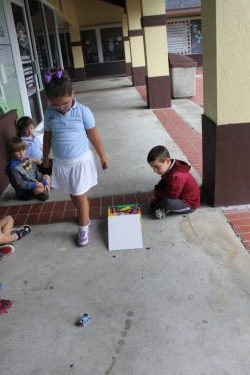
Look Out! Volcano Erupting: Bubbling Baking Soda
Posted on by Hands On Minds On Education TeamThe Concept: While creating a simulated volcano that erupts, the children will explore the concepts of chemical change, creating a gas, and how volcanic eruptions occur. This activity will demonstrate how two substances can be mixed to produce a gas. The children will use their senses of sight, hearing, and smell.
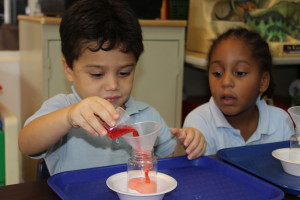
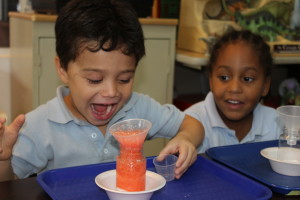
Chemical Changes in Matter: Making a Mixture
Posted on by Hands On Minds On Education TeamThe Concepts: In this activity, children will combine ingredients to make Play dough. Reinforce while participating in the activity that once all of the ingredients are combined, a chemical change has taken place and the original ingredients cannot be separated. The flour, water, oil and salt will now become another completely different substance, Play Dough. Student will measure, mix, follow directions and use their motor skills to knead and fold the Play Dough.
Squish and Squeeze – Secondary Colors
Posted on by Hands On Minds On Education TeamThe Concept: The children will blend primary-colored paint in bags to create secondary colors. They will use their hands to do the blending, which will give them a chance to learn the lesson via a sensory experience.


